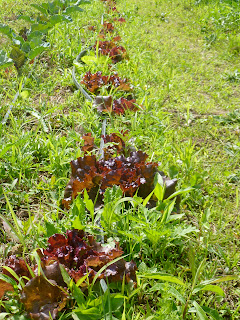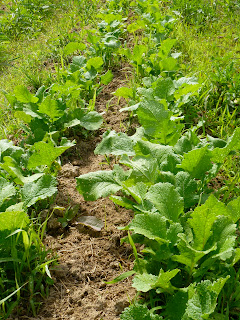Garlic Scapes
June is the month for garlic scapes, the flowering stalk and immature flower head of the garlic plant. Garlic scapes taste very much like garlic cloves but are a little less intense.
Following is a recipe for garlic scape pesto adapted from epicurious.com from Ian Knauer's book The Farm :
This recipe makes about 1 1/2 cups of pesto which can be mixed with pasta, rice, quinoa or spread on little toasts or crackers.
Needed:
10 garlic scapes
1/3 cup unsalted pistachios (you can use any nut/seed here, we used sunflower seeds)
1/3 cup finely grated Parmigiano-Reggiano
Salt and Pepper to taste
1/3 cup extra-virgin olive oil
Reserve the oil, salt and pepper. Puree all the other ingredients in a food processor or blender (it helps to chop the scapes before putting them in). With the motor running, slowly begin pouring the oil through the opening and continue until you've poured in all the oil. The mixture will be fairly thick when you're finished. Salt and pepper to taste. The pesto will keep for a week in the fridge or frozen for a month.
To use, prepare a batch of pasta, rice, quinoa etc. and mix the pesto in to taste. Alternatively it can be used as a spread. Delicious!



















































